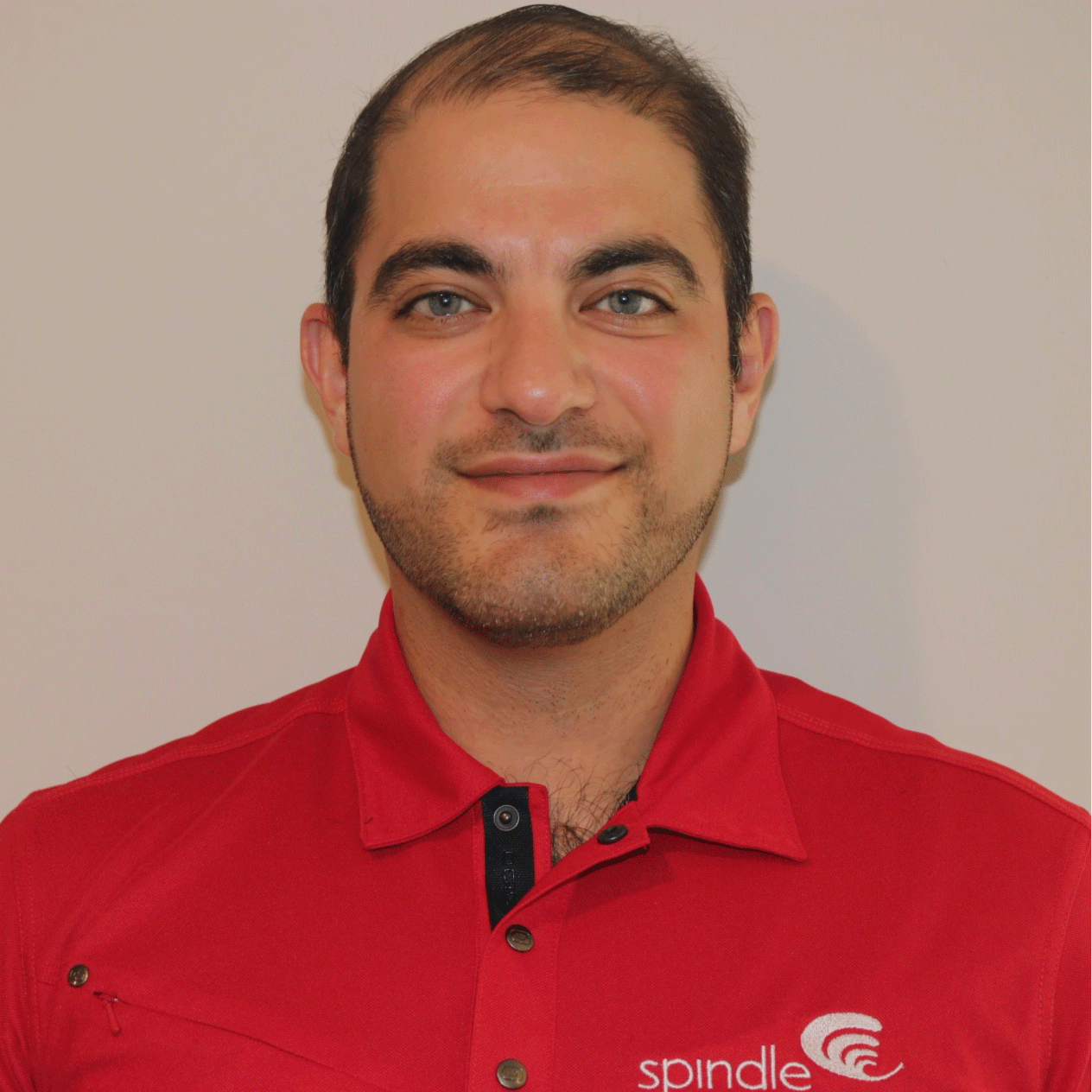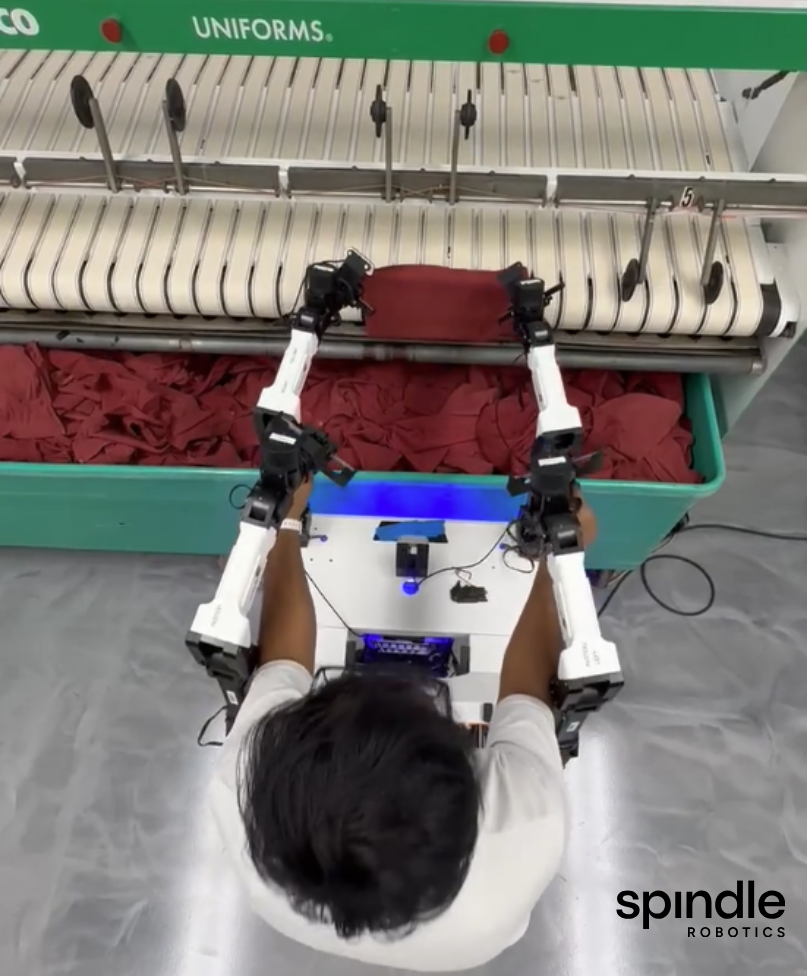Commercial Laundry Automation Opportunies


Commercial laundry plants are under increasing pressure to do more with less. Rising labor costs and high turnover are driving operators to rethink how they run their facilities.
That’s where commercial laundry automation comes in.
From automated sorting lines to AI-powered production tracking, automation is reshaping how laundry plants operate.
But what exactly does automation look like in a laundry plant, and where is the industry heading next?
So You're Hearing More and More About Commercial Laundry Automation...
If you're in the commercial laundry sector, there's no doubt you've been hearing more and more about automation.
Automation has already rolled out at scale in other industries, most prominently the automotive industry. It will likely take some time before the commercial laundry industry reaches that level of automation.
However, one thing that likely isn't going away is the root cause of why automation is viewed by many as the future of laundry. Interest in the developing technology is rising because of labor shortages.
We've seen and heard it first-hand from folks in the industry: staffing is a challenge. Ask a plant manager and they'll tell you it might even be their No. 1 concern.
During the recent 2025 Clean Show in Orlando, we had one laundry professional after another come to our booth to take a look at our robotics offerings. Some even took the time to fill out our survey, which asked laundry industry pros to rank their top operational concerns.
Nearly three-quarters of survey respondents ranked "finding reliable labor" or "labor costs" as one of their top two challenges.
Past that, respondents also had some priority for other concerns, like equipment maintenance, but the results provided a snapshot of something larger.
Labor challenges have been hurting the commercial laundry industry. You simply can't produce the way you need to if you have uncertainty about your labor force from week to week (or even day to day).
Opportunities for Commercial Laundry Automation
First of all, it should be noted that automation technology is developing rapidly: what might not be feasible today could be so in six months, a year, and so on.
So, for today, we'll review just three opportunities for commercial laundry operation, with the caveat that additional opportunities will likely arise as technology develops.
1) RFID-enabled sorting & inventory control
Automating identification with washable RFID tags streamlines bulk sorting, counts, and route reconciliation, materially cutting losses and callbacks.
TRSA reports that early adopters of RFID “experienced significant cost reductions,” including savings on textile ordering, recovery of missing rental goods, fewer route-rep return trips, and less staff time on shortages.
American Laundry News notes that RFID eliminates manual inventory tasks and improves turnaround for healthcare/hospitality accounts.
According to the International Journal of Scientific Research in Computer Science, Engineering and Information Technology, laundry RFID systems improve operational visibility (e.g., automated item ID in bags and during bulk handling).
2) Automated washing/chemical control + reuse (CBW, dosing, ozone)
Continuous-batch/tunnel washers with automated chemical dosing and water-reuse/ozone systems reduce water, energy, and rewash while stabilizing quality.
EPA WaterSense (Section 3.5) documents that efficient tunnel washers typically use ≤2 gal/lb, and washer-extractors with built-in recycle can use <2.5 gal/lb, marking clear efficiency gains over legacy machines.
The same EPA chapter cites a DOE/PNNL field study at the Grand Hyatt Seattle where a laundry wastewater recycling system cut water use ~80% with simple payback <1 year (thermal savings from returning heated, treated water).
EPA also quantifies retrofit savings: 10–35% (simple recycling), 85–90% (complex recycling), and 10–25% (ozone), giving operators a menu of step-wise automation options.
3) Automated finishing & material handling (folders/ironers, conveyors, robotics)
Mechanizing finishing boosts throughput and reduces repetitive strain on teams.
American Laundry News shows the scale of labor impact: one operator typically folds ~120 towels/hour by hand vs. 800–1,000 towels/hour with an auto-sorting towel folder. Meanwhile, large-sheet output can jump from ~60/hour (hand) to ~180–300/hour with automated spreader-feeder + ironer.
OSHA highlights musculoskeletal risks in laundry from lifting and pushing heavy wet loads and recommends mechanical aids—supporting the case for conveyors/shuttles and automated transfers to lower ergonomic exposure.
Garment sort in the commercial laundry is another task that involves a significant amount of manual processes ... today, at least.
Some robotics solutions providers are trying to automate this process with robotic solutions. Spindle's Hang to Hook solution, for example, aims to automate this repetitive, labor-intensive process.
Sorting speed of automated solutions continues to improve over time. However, it should be noted that even when automated sorting solutions might not process as many pieces per hour as a human might, they also do not take breaks and can work without stopping for longer periods of time.
But How Do I Start Automating My Plant? Where Do I Start?
There are quite a few opportunities to automate various functions in your commercial laundry plant, so it can be a bit dizzying to determine where to start.
Like a lot of other projects, it can be most useful to organize your automation goals by tier levels corresponding to investment.
Here's a basic outline of an automation roadmap according to investment levels:
Level 1: Quick Wins (Low Cost, High Impact)
Goal: Improve efficiency and consistency with minimal capital investment.
-
Automated Chemical Injection
-
Ensure precise dosing of detergents, softeners, and sanitizers.
-
Cuts down on chemical waste and improves wash consistency.
-
-
Moisture Sensors in Dryers
-
Automatically stop cycles when linens are dry.
-
Saves energy, avoids overdrying (which damages textiles), and reduces rewash.
-
-
Dashboards & Data Tracking
-
Simple software to track production, loads, downtime, and chemical use.
-
Immediate visibility into bottlenecks.
- Eliminates the hassle of manual data collection and harmonization
-
Level 2: Core Workflow Automation (Medium Investment)
Goal: Reduce manual handling and repetitive tasks.
-
Sorting Systems
-
RFID or barcode-based sorting to reduce labor at intake.
-
Faster turnaround and fewer sorting errors.
-
-
Automated Conveyors & Rail Systems
-
Move laundry automatically between wash, dry, fold stations.
-
Reduces manual cart pushing and bottlenecks.
-
-
Towel / Small Item Folding Machines
-
Eliminate one of the most repetitive and labor-intensive jobs.
-
Frees workers for more skilled tasks.
-
Level 3: Finishing & Quality Control (Larger Investment)
Goal: Standardize product quality and enhance customer satisfaction.
-
Flatwork Ironers & Automated Feeding Systems
-
High-throughput ironing for sheets, pillowcases, and linens.
-
Uniform finish with less labor.
-
-
Automated Garment Pressing Machines
-
Especially for uniforms, gowns, or high-end textiles.
-
Consistency in appearance and reduced operator fatigue.
-
-
Vision-Based Quality Control
-
Cameras + AI flag stains, rips, or misfolds.
-
Reduces rejects and customer complaints.
-
Level 4: Full Plant Integration (High Investment / Long-Term)
Goal: Build a “smart plant” with seamless automation.
-
Automated Guided Vehicles (AGVs)
-
Autonomous carts move bulk loads across plant floor.
-
Reduces worker injuries from pushing heavy carts.
-
-
Smart Load Balancing & Scheduling Software
-
Routes loads to the most efficient washer/dryer/folder available.
-
Minimizes downtime and evens out workflows.
-
-
RFID Lifecycle Tracking
-
Tracks garments/linens over their lifetime.
-
Helps forecast replacement needs and billing for lost/damaged items.
-
How is Spindle Approaching Commercial Laundry Automation?
If you stopped by our booth at Clean Show 2025 in Orlando, you probably saw the various automation solutions the Spindle team has been working on.
In case you weren't able to attend the show, you can watch the video below to see what we've been up to with respect to commercial laundry automation:
In 2025, Spindle launched one of several new product categories: Spindle Robotics. Aided by a number of valued technology partnerships, Spindle is working to address the challenges mentioned earlier (i.e., labor issues).
With that said, there's no doubt you have questions.
How will these solutions work in my plant? Can I justify the costs? How will they work alongside my human FTEs?
These are all valid questions. We have set up a discovery process to help you explore in greater detail how these solutions might work in your plant layout and conditions. Click the graphic below to fill out an inquiry form and start your automation journey.
p.s. For additional reading, if you're a TRSA member, you can check out TRSA's article from February 2025 about Spindle's robotics efforts.

